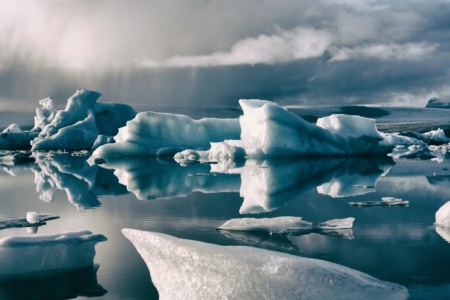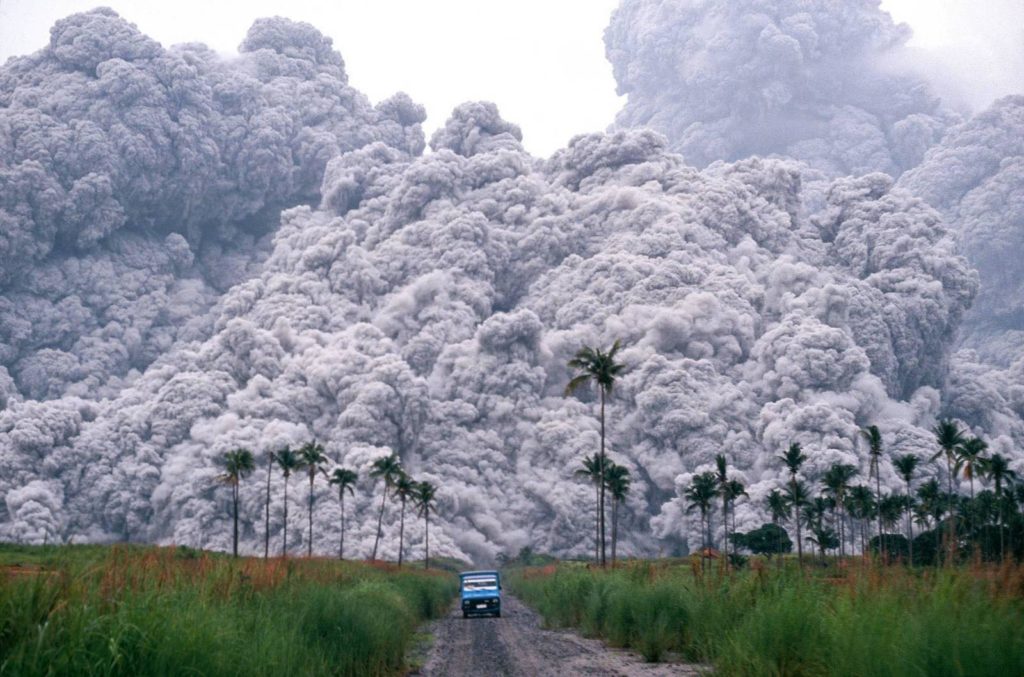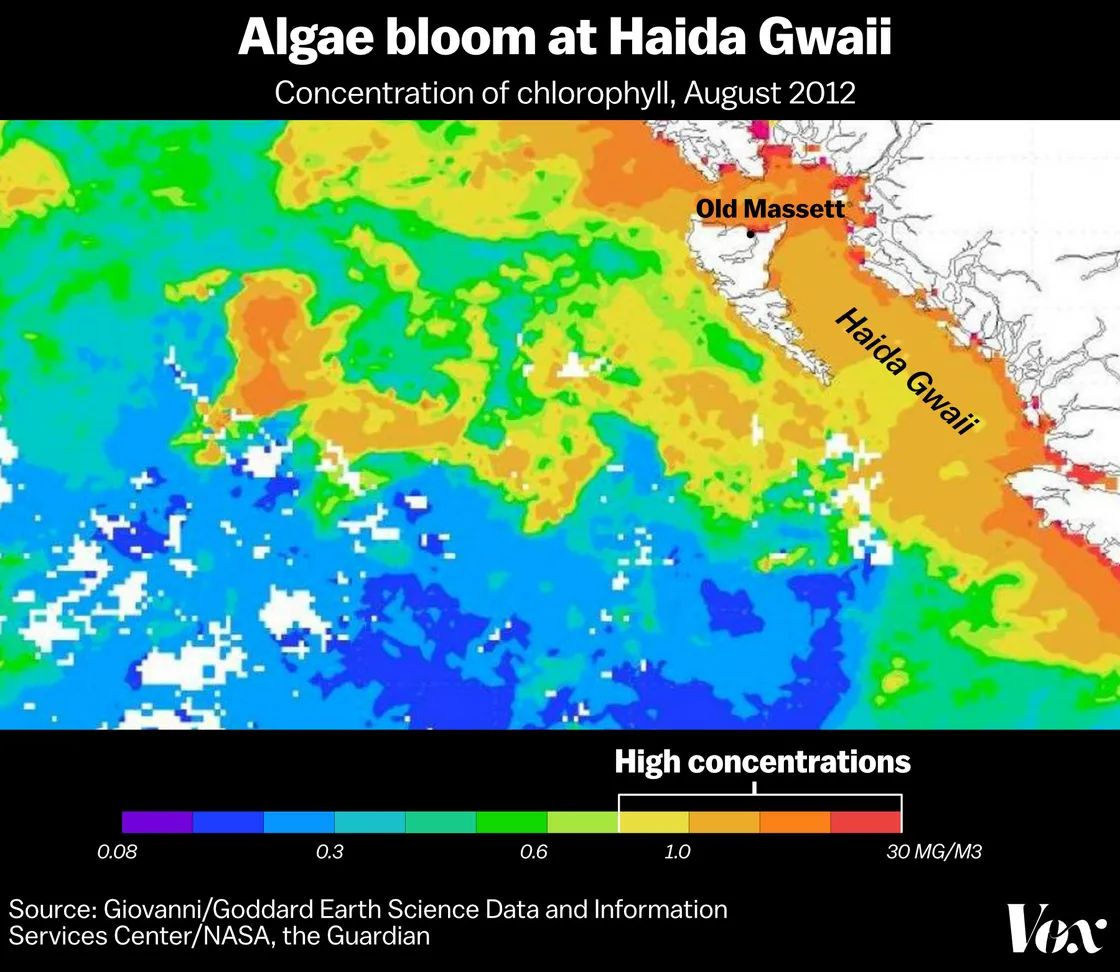
Make Sunsets claims to have launched special balloons that sprayed reflective particles into the stratosphere, breaking a controversial barrier in solar geoengineering.
Solar geoengineering is an attempt at climate manipulation designed to reflect sunlight back into space, mimicking the natural process that occurs after large volcanic eruptions. Cooling effects usually follow large volcanic eruptions. After the emission of a huge amount of dust, ash and sulfur dioxide into the air, the first two substances create a short-term cooling effect, and the latter rises high into the stratosphere, where, combining with water molecules, it turns into particles of sulfuric acid and enhances the cooling effect of the surface by reflecting solar radiation . .
Cooling effects usually follow large volcanic eruptions. After the emission of a huge amount of dust, ash and sulfur dioxide into the air, the first two substances create a short-term cooling effect, and the latter rises high into the stratosphere, where, combining with water molecules, it turns into particles of sulfuric acid and enhances the cooling effect of the surface by reflecting solar radiation . .

In theory, artificial spraying of sulfur and similar particles in sufficient quantities could potentially alleviate the effects of global warming. In practice, it is not difficult to do, although it is quite costly. But scientists mostly refrain from conducting such experiments – substances can negatively affect the health of people, flora and fauna after spraying. Side effects may be stronger in some regions, which may trigger geopolitical conflicts.
Course
FINANCIAL MANAGER
Become a professional financial manager and earn from $500 in 2 months.
REGISTER!
The Earth’s poles can be “cheaply” cooled by 2 °C: tons of sulfur dioxide and a hundred airplanes will be needed
Researchers who have long studied the technology are concerned about the actions of Make Sunsets, a startup that not only claims to have tested the injections, but has also launched a dedicated website in Mexico selling “cooling credits” for future flights of specialized balloons. The company did not agree with the public or scientific scrutiny of its actions.
Luke Eiseman, co-founder and CEO of Make Sunsets, acknowledges that the effort is “part entrepreneurial, part provocative act of geoengineering activism.” He hopes that by crossing the controversial barrier, he will help open a broad public debate and move forward an industry whose development has been stalled by criticism.
“In my opinion, it’s morally wrong not to do that,” he says.
But many industry experts believe such an effort is extremely premature and could have the opposite effect of Eiseman’s expectations.
“The current state of the science is not good enough … to either reject or accept solar geoengineering, let alone implement it,” said János Pastor, executive director of the Carnegie Climate Governance Initiative (the initiative calls for oversight of geoengineering and other climate-changing technologies party, international agreements or scientific organizations).
The company’s behavior follows long-standing fears that “rogue actors” with little knowledge of the atmosphere or the implications of the technology could unilaterally choose to geoengineer the climate without any consensus on whether it could be done or what the appropriate global average temperature should be .
Some were quick to draw parallels between Make Sunsets and an incident a decade ago, when an American entrepreneur dumped a hundred tons of iron sulfate into the ocean in an attempt to cause an algae bloom (salmon were supposed to feed on it, and the residue would absorb carbon dioxide).

Make Sunset’s efforts again underscore the urgent need to establish broad oversight and clear regulations for responsible research in geoengineering. Earlier, the Biden administration announced that it is developing a 5-year research plan for ways to cool the Earth: including stratospheric aerosol injection, sea lightening and thinning of cirrus clouds.
Launching sulfur balloons
Eiseman himself claims that the first two launches took place in April in Baja California, several months before Make Sunsets itself officially registered.
Several grams of sulfur dioxide were placed in balloons with the necessary amount of helium that he was able to carry them into the stratosphere. The balls were expected to flake under pressure at altitude and thus release sulfur particles. Whether this happened is unclear, as no monitoring equipment was installed on board. Eiseman did not receive any permits from governmental or scientific institutions in Mexico or other countries:
“Basically, it was done to prove that I could do it.”
In the future, Make Sunsets hopes to increase the sulfur payload, add telemetry equipment and other sensors, then switch to reusable balloons and publish data after launches.
The company is also trying to profit from the cooling effect of future flights and is offering to buy “cooling credits” at a price of $10/gram — enough, Make Sunsets claims, to offset the warming effect of one ton of carbon over the course of a year.
“I want to cool as much and as fast as possible, frankly, for the rest of my life,” Eiseman says, adding that in 2023 he will spray as much sulfur “as the customers will pay for.”
The company says it has raised $750,000 from Boost VC and Pioneer Fund and that its first investors have also been buying cooling credits.
“terrible idea”
Shushu Talati, a resident scientist at American University, which is creating a nonprofit organization focused on solar geoengineering regulation, is critical of the startup’s claims:
“The company’s announcement of such a specific result does not seem very plausible, given the enormous uncertainty at this stage of the study.”
Kelly Wanser, executive director of SilverLining, a nonprofit that supports research into climate risks and potential interventions like geoengineering, agreed:
“From a business perspective, the chilling effects and risks cannot yet be quantified in any way, making the offer speculative.”
David Keith, one of the world’s leading experts on solar geoengineering, says that the amount of material in question—less than 10 grams of sulfur per flight—doesn’t pose any real danger to the environment (a typical commercial flight can emit about 100 grams per minute). .
But Keith also says he worries about any attempt to privatize key geoengineering technologies, including patenting them or selling spray credits — because a private company would have a financial incentive to downplay the risks and continue to sell its services even as the planet cools to cooler temperatures.
“Doing it as a startup is a terrible idea,” he says.
For its part, Make Sunsets says it’s working on the best modeling research available today, and that it will adjust its practices as it learns more, and the startup hopes to work with countries and experts to guide the effort as it expands.
“We are convinced that it is sunny [геоинженерия] is the only possible way to stay below 2 ˚C, and we will work with the scientific community to deploy this life-saving tool as safely and quickly as possible,” says Eiseman.
But critics emphasize that it was necessary to communicate with scientists before the start of experiments and sales, now the company will be met coldly by many organizations.
Source: MIT Technology Review





